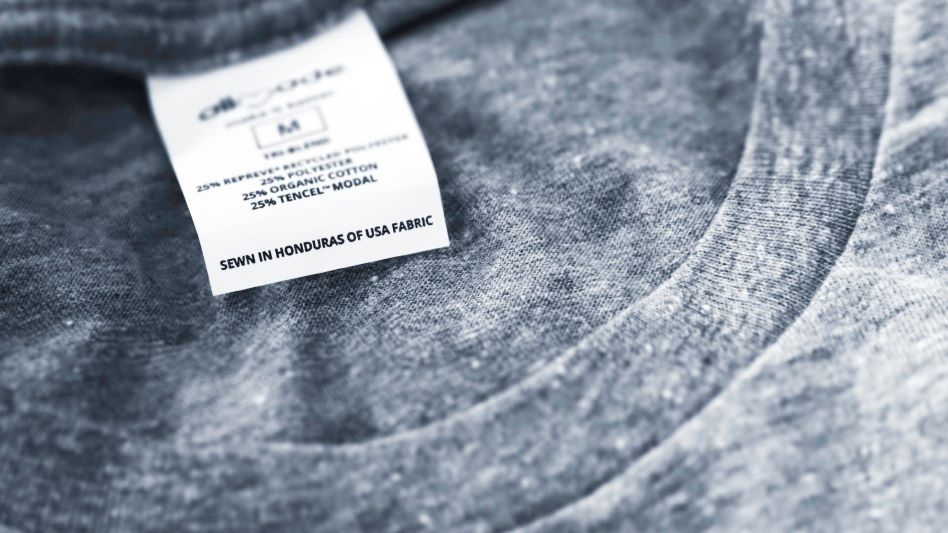The coronavirus shone a spotlight on the delicate nature of the international supply chain. In response, brands are looking to supply more American-made goods to their customers. But the details on the tag only tell part of the story.
The calls for more American-made consumer goods have grown louder since the peak of the COVID-19 pandemic. As the world ground to a halt back in the spring, the international supply chain did, too. This was especially pronounced in the apparel industry that so many brands, marketers, and wholesale suppliers rely on.
You may be pondering what it would take to go all-American with your inventory of branded shirts, hats, activewear, and bags. And as the United States inches closer to the fall season, and concerns over another spike in the coronavirus linger, so, too, do the questions about the possibility of an all-American supply chain.
How much of the supply chain will reshore?
In a June 17 article, Forbes quotes Bob Hormats, former U.S. Undersecretary of State for Economic Growth, Energy and the Environment, as saying, “Even prior to the coronavirus crisis, there was beginning to be a reassessment in boardrooms and in Washington about our supply chain reliance on certain countries.”
But it’s unrealistic to think that all offshore manufacturing will reshore. In the aftermath of the pandemic, some suppliers did, some still will, but most will not. Even then, it will be dependent on industry. Christian Lanng, co-founder and CEO of supply chain platform Tradeshift, told Forbes, “No major manufacturer will pull out of China. They might build secondary, tertiary plants here or elsewhere, but they can’t risk losing access to the China market.”
Why don’t more companies manufacture in the USA, anyway?
Roughly 98 percent of clothes and shoes purchased in the U.S. are imported. Thomas Industry Update notes a few long-standing business dynamics that contribute to these offshore dynamics. The high U.S. corporate tax rate, regulatory hoops, cost of living expenses, and ethical considerations all contribute to a sometimes less-than-friendly production environment on American soil. As Hormats notes, other offshore locations – especially Vietnam and South Korea – stand to gain substantially from the global disruption.
Also, the modern manufacturing process is ridiculously specialized and full of “complex interdependencies” that make it inherently difficult to make one product in one place.
So, what’s it like buying “Made in USA”?
First, we need to get clear on our terms. The Federal Trade Commission (FTC) has a bevy of definitions and qualifications for what “Made in USA” means. According to a 2017 Business Insider article, things like clothing — hats, t-shirts, etc. – are “permitted to have a ‘Made in USA’ label as long as the item was cut and sewn in the U.S. and the fabric was created in the U.S., regardless of where the fiber was originated or where the yarn was spun.”
This leaves the door open for ambiguity.
We recently ran into these ambiguities with a client who was looking for American-made t-shirts and hats. One t-shirt option on SanMar (a large, U.S.-based wholeseller) was described as “spun, knit, fabric dyed and finished in the U.S.A.” When we ordered a sample, the tag read, “Sewn in Haiti of USA Fabric.”
That wasn’t what our client was looking for. Nor were the other wholesale brands who offered “Made in USA” options that were incongruent with the rest of their clothing lines, or that met FTC standards while still being produced with “imported materials.”
What we learned is that even if something is made in America, it doesn’t automatically mean that you’re elevating your brand or getting a wholesome piece of swag. American Apparel boasts of “ethically made, sweatshop free” clothes, but a few years ago their brand was embroiled in a mess of sexual harassment lawsuits and advertisements that bordered on the pornographic and sexually exploitative.
Are you saying American-made isn’t worth it?
After sifting through all the nuances of procuring ethically made, near-shore produced swag for your brand, you might be left scratching your head. But if you’re determined to take a stand on ethical issues with your choice of apparel and collateral, there are a few ways to go about it.
- There are other ways to make an ethical impact. Wholesale suppliers like Allmade are not made in America, but they are made closer to America, and their brand stands for people, environment, and other noble causes that can leave your customers feeling good about your swag.
- Be prepared to spend more. If you’re really sold on buying American-made, then make sure your budget has the room to accommodate the extra costs. When we were pricing shirts for our client, an offshore tri-blend t-shirt cost more than 60% less than a comparable near-shore tri-blend. The discrepancy with hats was even greater.
- Take a wholistic look at your brand values. If you’re trying to cash in on a trend to boost perception or loyalty with your customers, take time to evaluate the rest of your company’s values and purchasing decisions. Is there alignment across the board? Are you being consistent and true to yourself?
Today more than ever, customers are looking to stick fiercely with brands that share the same values and political concerns. (If they’ll turn on Trader Joe’s, they’ll turn on anyone.) You can’t be everything to everyone, and jumping on a trend for the sake of appearances is an easy way to lose what you’re actually hoping to gain. Be yourself. Do your homework. And work toward a wholistic integration of your values – from your swag to your solutions.
Need swag? We’d love to lend our supply chain expertise to help outfit your brand ambassadors. Drop us a line!
